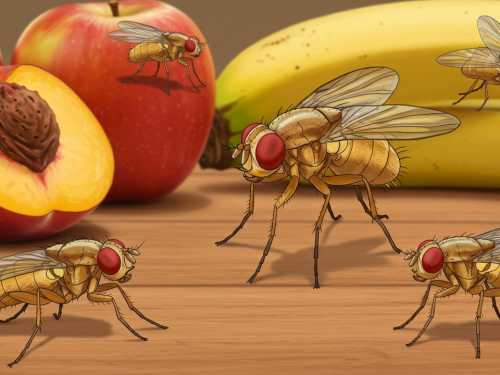
Have you ever noticed that if you just leave fruit on the table unattended for a couple of days, annoying midges will immediately appear? We'll tell you where they come from.
The simplest and most logical option: they have been sharing your living space with you for a long time. It is not easy to see a fruit fly – this flying 2-millimeter dot does not buzz or bite, but often gathers near dark and damp corners or sources of fermentation. One has only to forget a spoiled fruit, spill juice or leave an alcoholic beverage open – and they quickly become active and run for a “free meal” from all corners of the apartment, where they have previously been invisible.
But where does that first pair of Drosophila come from in the house, which then begins to actively reproduce?
Even if you close all the windows and doors, this does not guarantee protection. Drosophila can enter your home like a “Trojan horse” along with food: both rotten fruit and the freshest greens.
Flies lay their eggs on any potentially edible object while still in the store or warehouse. It is almost impossible to see these eggs or larvae with the naked eye (the size of the eggs is about half a millimeter), so it is worth washing the products well after going to the store.
However, often this does not help, as the eggs may be implanted in the pulp, or the larvae may already be inside the product and eating it.
Yes, the information that we can eat a small amount of eggs or larvae along with fruit may be unpleasant. However, fruit flies and their larvae are not harmful or dangerous to human health.
Their life cycle from egg to adult can take only about a week under favorable conditions. The female lays up to several hundred eggs, allowing a single individual to quickly create an entire generation of “tenants”.
And it's not just fruit that can be a source of the problem: leftover wine, beer, or other sweet drinks in empty bottles, a damp trash can, clogged sinks with organic residue, and even dirty rags or sponges can be the perfect place for them to breed.





